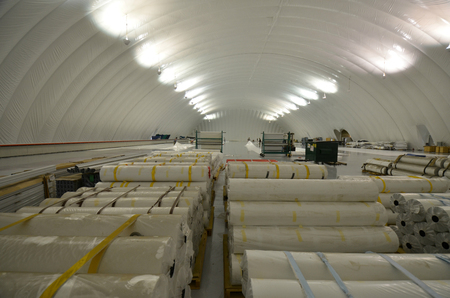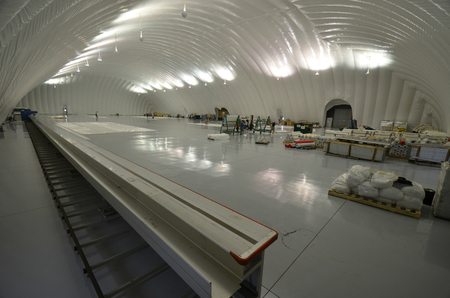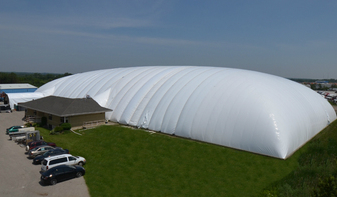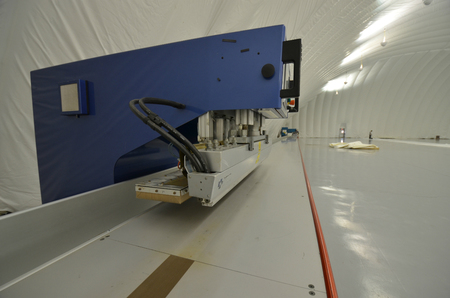
We collect basic website visitor information on this website and store it in cookies. We also utilize Google Analytics to track page view information to assist us in improving our website.
Domes don’t just inflate themselves. An entire team of dedicated hard working people work meticulously to create near flawless domes. But how is this done? How do they turn strips of fabric into an inflatable structure for soccer or tennis matches?
A dome starts out as long stretches of fabric. These strips need to be assembled into a bubble, one piece at a time. To create one piece from two, The Farley Group uses a process called dielectric welding. Sounds complicated, so let’s take a closer look into what holds domes together.
 |
 |
|
Why Sewing Doesn’t Work
The most common method of fastening fabrics together is through physically attaching them with some sort of fastener—things like thread, glue, or even rivets. While these solutions can be strong, they don’t really work well with air domes.
Using thread or rivets requires piercing both pieces of fabric to mechanically fasten the pieces together. Dome fabric must stay as one continuous, unbroken piece though, to create an airtight barrier. If the air seal is broken or compromised, inflation systems will have to work overtime to keep the structure inflated.
Glues avoid this problem—they allow the two pieces of fabric to stay intact. However, there are other issues with using glues, such as a limited life expectancy as well as being difficult to work with and apply consistently, especially when working on a large scale.
When building a dome, consistency counts. A single weak spot can be disastrous; any defect destroys the architectural integrity of the entire structure. To create seams that have no weak spots and absolutely zero defects, The Farley Group uses a top-quality dielectric welder.
Dielectric Welding
To get absolute consistency at all of the seams in a dome, we use a process called high frequency or dielectric welding, or sometimes called R.F. (Radio Frequency) heat sealing. It may seem high-tech, but this is a method that has been around for more than 70 years. Tried and tested over generations, high frequency welding is the best way to build an air structure.
The process works by squeezing the two pieces of fabric together then using a high-precision machine to beam high frequency electromagnetic waves into the two sheets. The electromagnetic waves work just like a microwave oven to heat up the sheets, essentially melting the two into an air-tight single sheet. Because the two pieces have become one, the resulting weld has become an area that’s twice as tough, and twice as unlikely to break. This is why the weld is stronger than the original fabric itself!
Welding the Farley Way
Dielectric welds are incredibly strong, but just like any construction, the right tools make the job. Because domes are so big, The Farley Group needs a setup to accommodate the welding of extremely long sheets of fabric. In our production dome, we have a welder that tracks along a 255’ long table. This means the entire weld often completes in one pass. It’s no wonder Farley domes are so tough!
 |
 |
|
Constructing domes requires attention to detail; there is no room for error. To compensate for the low margin of error, the fabric welds are over-engineered and the dielectric welds provide the intense strength needed to create an air-tight, strong, and sturdy air structure. Farley domes stand the test of time, thanks to a close attention to creating perfect seams.
